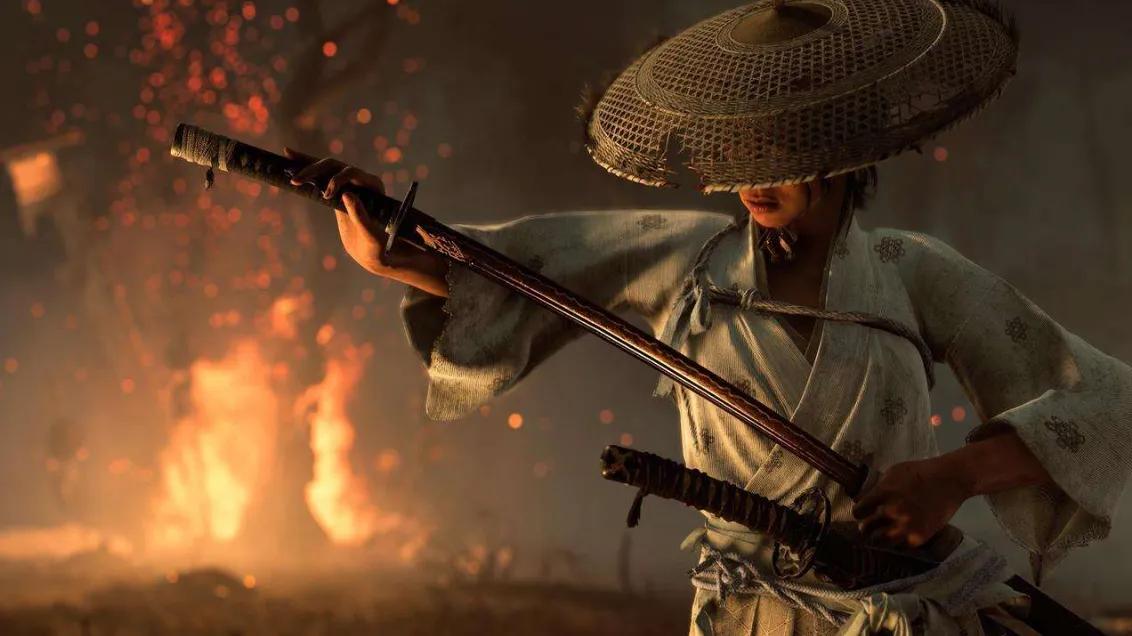Yōtei'nin Hayaleti Öldürme Sanatını Tekrar Kişisel Hale Getiriyor
Ghost of Yōtei is a sequel that doesn’t linger in its predecessor’s shadow. Sucker Punch Productions has built on the foundation of Ghost of Tsushima with a heroine who fights without the pretense of honor, and the result is combat that feels raw, intimate, and unflinchingly direct. Atsu, a vengeful warrior stalking the frozen lands of Ezo, brings new rhythm and ruthlessness to the samurai formula — most of all through her uncanny ability to disarm foes and turn their own weapons against them.
Where Jin Sakai’s stances offered grace and structure, Atsu’s violence feels improvised and personal. Every enemy she cuts down drops a potential projectile: a katana, a yari spear, or a heavy odachi, each ready to be thrown with devastating precision. What might have been set dressing in other games becomes an arsenal scattered across the battlefield. Players can sweep through encampments, tossing reclaimed blades into distant archers, felling them before they draw breath. In practice, this simple mechanic changes everything. It shortens the distance between encounters and makes even chaos feel deliberate.
Here is how players can use Ghost of Yotei throw mechanic step by step:
- Approach an enemy or finish one in combat so their weapon drops to the ground.
- Use a disarming move (Onryō’s Strike or a counter when they try to disarm you) to knock a weapon free if they’re still alive.
- Walk or sprint to the fallen weapon and press the interact button to pick it up.
- Aim briefly (optional) or immediately press the throw button to hurl the weapon at a target — thrown blades one-shot weaker foes and hit hard with the right charms.
- Combine throws with standoffs: open an encounter with a standoff, take down several enemies, then grab and throw a dropped weapon at distant enemies.
- In duels, disarm the opponent, recover their unique blade, then throw it back for high damage or to stagger.
- Equip damage-boosting charms and upgrade relevant skills to increase thrown-weapon lethality; use the wolf summon to stagger or finish targets for easy throws.
Sucker Punch has built this around a clear fantasy — that of an unrelenting hunter who never hesitates. Atsu doesn’t duel with decorum; she fights to end a life as efficiently as possible. The throw mechanic, which allows her to impale foes mid-combat or hurl their own weapons back into their chests, captures that perfectly. It’s a grim sort of poetry, one that rewards timing over restraint. With the right charms equipped, thrown weapons can strike with such force that even armored enemies fall in a single blow.
Elsewhere, Ghost of Yōtei continues to balance its spectacle with quieter systems, though they feel secondary to its combat. The game technically includes a “Listen” ability — a focused hearing mode familiar from stealth-driven predecessors — but it arrives deep into the story. For many players, it comes almost as an afterthought. In practice, it hardly matters. Atsu’s journey through Ezo invites aggression. Her combat tree grows into a web of violent efficiency, and the wolf’s role expands from a companion to an extension of her will.
By the time the Listen mechanic unlocks, the player has likely learned to live without it. Atsu’s world rewards confrontation, not hesitation. Each skirmish turns into a kind of dance, where even a missed strike can be redeemed by a thrown weapon or a summoned beast. The wolf itself evolves into a decisive ally — staggering foes, finishing stragglers, and lending the standoffs a dual rhythm that feels almost theatrical.
The combined effect is that stealth fades into the background. Ghost of Yōtei’s combat isn’t just louder; it’s more expressive. Each kill feels like an act of authorship, from the blade’s arc to the thrown weapon that ends the fight. The violence is stylized yet grounded, and Sucker Punch seems unafraid of letting players indulge in its spectacle.
After dozens of hours, that central loop — disarming, reclaiming, throwing — doesn’t lose its pull. It’s tactile and decisive, the kind of mechanic that sustains replayability by feel alone. Ghost of Yōtei takes the meditative calm of its predecessor and replaces it with something sharper and less forgiving, a reflection of its heroine herself. In Atsu’s hands, every weapon is both a tool and a message: the fight is no longer about legacy or lineage, but about survival, precision, and control.
The result is a sequel that feels liberated from its own lineage. Ghost of Yōtei doesn’t ask players to be ghosts. It asks them to throw.


Yorum